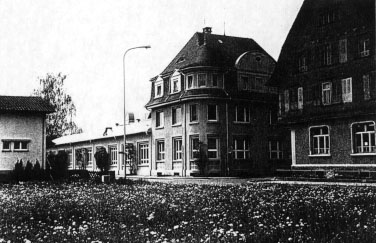
Go back to Part 1

Because DesignTex also worked with over 40 different contract mills around the world, Lyons contacted some of them to investigate their environmental efforts.[3] In December of 1992 she became interested in a sample of a fabric product line called Climatex. Mr. Albin Kälin, Managing Director of Rohner Textil AG, a mill located in Switzerland, sent Lyons a sample. He and Rohner Textil had been pursuing an environmental agenda of their own, and he was willing to team up with Lyons and DesignTex in developing a new product based on Climatex.
The fabric, a patented combination of wool, ramie, and polyester, was unique because it wicked away moisture from a person who was in contact with the material over long periods. It was intended to improve comfort in wheelchairs and trucks, since those applications involved extended periods of contact between people and fabrics. Exhibit I contains additional information on Climatex.
Lyons also inquired about the possibility of recycling Climatex. Kälin informed her that recycling fabrics was possible only if the fabric was pure (e.g., 100 percent wool or cotton), but not if it was a combination of materials. Because Climatex was a blend of wool, ramie and polyester, no recycling was possible. In addition, Kälin mentioned that recycling any commercial fabrics was questionable, because they were typically glued as upholstery, and the glue itself made recycling difficult. Nevertheless, he went on to add, "there is a far more important argument on the aspect of ecology to Climatex." Since the fabric was created without any chemical treatments, "...the yarn in the fabric can be burnt [sic] without any damaging chemical reaction and are consisting [sic] of a good heating factor." By "good heating factor," Kälin meant that the fabric released a large amount of energy when burned, and he proposed using this energy in the operation of the mill. He also mentioned that Climatex was being tested in Germany by an independent institute, the International Association for Research and Testing in the Field of Textile Ecology (OEKO-Tex).[4]
Both Kälin and Lyons were pleased when Climatex passed the OEKO-Tex inspections in May 1993. The institute, concerned with human ecology issues, tested for pH value, content of free and partially releasable formaldehyde, residues of heavy metals, residues of pesticides, Pentachorophenole (PCP) content, carcinogenic compounds, and color fastness. Having passed these tests, Climatex could bear the OEKO-Tex trademark and was certified to be allergy-free. Exhibit 2 contains the English translation of the OEKO-Tex Standard 110, which outlines in greater detail the criteria used in the certification process . [5]
By the middle of 1993 Susan Lyons had several options to consider for an environmental design. The most promising one seemed to be the Climatex fabric from Rohner, which was certified to be manufactured within the OEKO-Tex specifications. But, she was worried that because the fabric was not recyclable, and because it was difficult to make a grand environmental statement using the OEKO-Tex label, that option may not be as good as it seemed. In addition, the product was not cheap. It was priced competitively within the worsted wool market niche, but that particular niche was on the expensive end of the overall market. She considered using yarn made from PET-recycled soda bottles, but she was not confident that the vendors could deliver reliably. Her research uncovered promising options, but each had difficulties and risks.
In July of 1993, DesignTex owner Ralph Saltzman, President Tom Hamilton, Consultant Steve Kroeter, and Lyons met to consider what the next generation of the PortfolioTM Collection would be. Launched in 1991, PortfolioTM had been a highly successful major product line. By mid 1993, however, the product's demand had peaked. At this meeting, the team agreed that the next PortfolioTM collection would have a major impact on the market if its design focused on the green issue.
During the meeting, Lyons brought up another issue that could not be neglected: aesthetics. In addition to being environmentally friendly, the next PortfolioTM collection had to be as beautiful as the last. Lyons hoped to collaborate with a prestigious designer in producing beautiful fabrics for the new line, just as she had for the original Portfolio TM collection. At the meeting, Kroeter suggested that they contact Suzy Tompkins of the Esprit® Clothing Company, which had just released a unique line of clothing based upon organic cotton. Lyons suggested an architect who was well-known for his environmental philosophy and his architectural design accomplishments, William McDonough. The group agreed that they would contact both designers and invite them to participate in the next generation of PortfolioTM. Tompkins of declined to participate, because as a clothing manufacturer, she rarely worked with commercial-fabric designers. Lyons did, however, receive a more enthusiastic response when she contacted McDonough.
Go on to Part 3